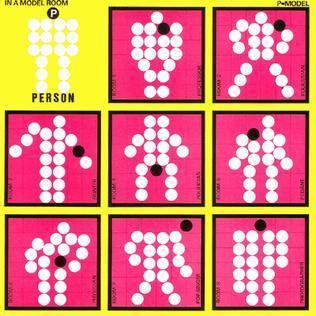Recorded Tokyo, 1979 Language Japanese, English Release date 25 August 1979 | Length 33:28 Songs KAMEARI POP | |
 | ||
Released August 25, 1979 (1979-08-25) Producer Masahide SakumaP-Model Genres Synth-pop, Industrial music Similar P-Model albums, Experimental rock albums | ||
In a Model Room is the debut album of Japanese band P-Model.
Contents
- Sunshine city in a model room
- Background
- Composition and Production
- Legacy
- Track listing
- Personnel
- Release history
- References
Sunshine city in a model room
Background
By 1978, Susumu Hirasawa, guitarist and vocalist of Mandrake, one of the few Japanese progressive metal bands at the time, was unsatisfied with the style the band worked in, feeling that progressive rock had lost its social relevance and became solely for entertainment. By then, Mandrake had only achieved reception by a niche live audience that were into progressive rock and bit parts. Around this time, Hirasawa came across punk rock groups like Sex Pistols, 999 and Métal Urbain; their band also discovered the Nylon 100% café bar/live house, where they were introduced to new wave music and visuals. Sensing that it was the advent of a new era, Hirasawa and keyboardist Yasumi Tanaka started writing songs in the punk/new wave style, and cut their waist-length hair short. Mandrake had turned into a half-hearted band and, after declining an offer from the director of Victor Music Industries, Hirasawa decided to "abort" Mandrake, characterizing it as the defeat to commercialism. The band's final live performance was a three-hour show at the Shibuya Jean-Jean, meant to be the symbolic burial of Mandrake's aborted body.
On New Year's Day 1979, the members of the band held a meeting to decide how they would reform. Bassist Tohru Akutu, still attached to progressive rock, decided to depart from the band. The instruments which "emitted a pretentious grandeur" (most of them painted in dignified colors like purple, gold and burgundy) were either repainted in bright colors (like yellow, light blue and pink) or sold off to buy ones more adequate for what the band envisioned. It was decided that their name would be changed to something that evoked the new development of a mass-produced industrial good.
Composition and Production
Most of the songs on the album were created by Mandrake late in the group's existence, which allowed for a quick debut release. The songs show a tendency for complex compositions and unusual time signatures. The lyrics reflect on the sociopolitical issues of Japan at the time, during the Japanese post-war economic miracle, and were influenced in part by Nineteen Eighty-Four.
In a Model Room was produced by Masahide Sakuma, keyboardist of the new wave band Plastics, who agreed to do so on the strength of the album's first track. Described by Hirasawa as "an honest man who acted with a life-sized air of cleanliness", Sakuma was swiftly trusted by the band, who were cautious with making their debut. Producing for the first time outside of his band, Sakuma went on to become a renowned session producer.
The instrumentation is a mix of standard punk with electronic devices for mechanical tones: A Roland CR-68 drum machine does simultaneous beats alongside a standard drum kit; the Maxi-Korg 800DV synthesizer was used for a unique blipping noise, dubbed by the music press as a "musical stapler", and as a vocoder for "Art Blind". P-Model came to argue with Warner-Pioneer, Sakuma and engineer Makoto Furukawa daily over the Yamaha YC-10 combo organ: The band chose it for a clicking noise made when a key is pressed, the production wanted to take it out of the mix and constantly told P-Model to rent an expensive keyboard, which they refused adamantly. P-Model would alter the equalization settings Furukawa used to remove the clicking noise every time he looked away from the mixing console until he stopped noticing it.
Hirasawa re-recorded the album (with the exception of "Sophisticated") in 1999 as Virtual Live-1 [P-Model Live at Roppongi S-Ken Studio 1979].
Legacy
In 2007 Rolling Stone Japan ranked it at number 52 in its list of the 100 Greatest Japanese Rock Albums of All Time and Snoozer ranked it at number 125 in its list of the 150 Greatest Albums of Japanese Rock 'n' Roll. Polysics covered "The Great Brain" for the 2007 album Karate House and have performed "Art Mania" live. A cover of "Art Mania" using Kagamine Rin is included on the Hatsune Miku sings NEW WAVE cover album.
Track listing
All tracks written by Susumu Hirasawa, except where noted.
The figure of "Art Mania" is a modification of a phrase from the 1952 Poly e Seus Modernistas song "Turista" (written by Ângelo Apolônio), based on a 1963 cover by The Atlantics. "White Cigarettes" contains a quotation of "The Streets of Cairo, or the Poor Little Country Maid" (written by Sol Bloom).
The group also planned to include the Mandrake song "Alien" (異邦人, Ihōjin) on the album, which was left off due to complications, but was later rerecorded, with new parts by Tanaka for Landsale.
